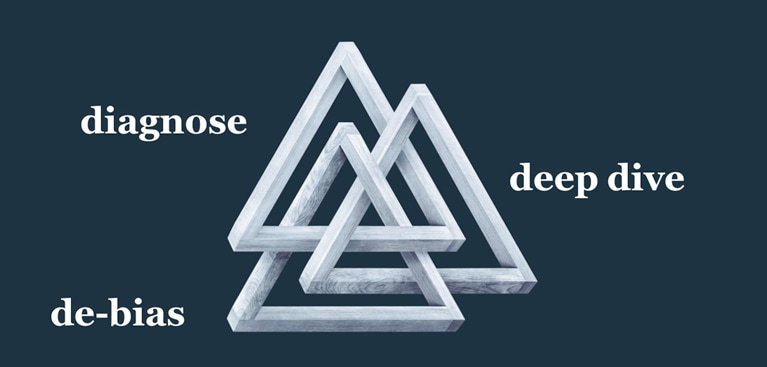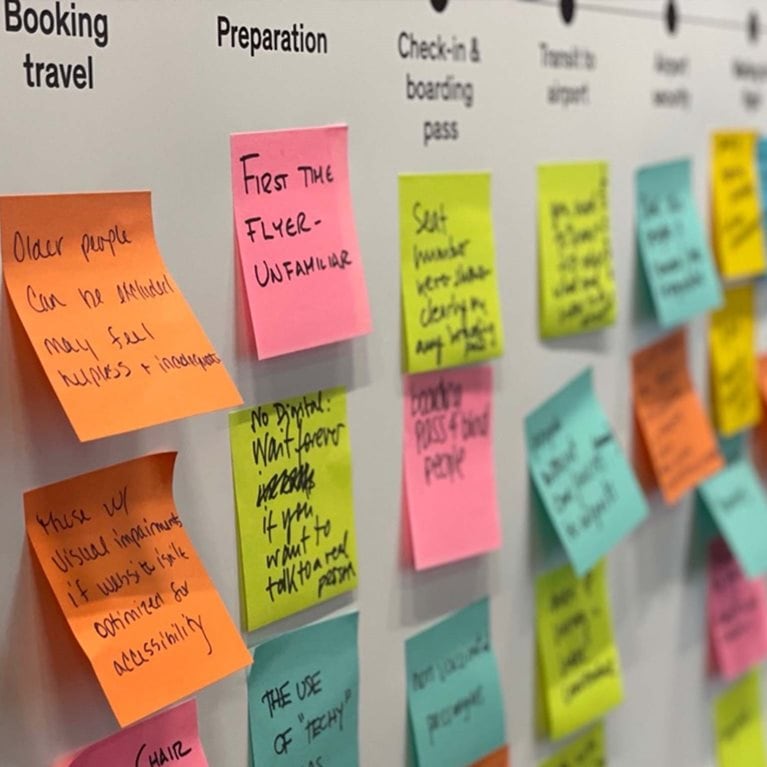Companies across the spectrum have embraced diversity, equity, and inclusion (DEI) as a top priority. Now they must figure out how to translate their best intentions into outcomes—and many organizations are struggling.
One of their biggest challenges is the sheer scope of the issue: how can DEI be broken down into solvable pieces? And how can companies embed the practice of inclusion into the way they design products and services to ensure they serve all consumers?
To demonstrate a different approach, we hosted a workshop during the Fast Company Innovation Festival where attendees from all over the world could sign up. A group of almost 50 people came together for a session on “Intentionally building equity and inclusion into product design.” A diverse group of participants, who spanned geographies and industries—from real estate and healthcare to the military—and hailed from many countries, gathered in New York for a 90-minute problem-solving session. Their charge: identify solutions and develop business cases to increase inclusion.
While this same format usually takes half a day or more with our clients, we wanted to see what could be done within the 90-minute timeframe we had. Our aim was to show how a condensed session with diverse participants against a clear structure could produce new avenues into an otherwise daunting topic.
The workshop featured a hypothetical client to rethink the end-to-end experience for an international airline—given most of the participants arrived to New York in this way. The collective goal was to create viable business cases for more accessible physical and digital experiences. After arriving on the hypothetical situation and personas, participants were broken into four groups and instructed to follow a unique three-part framework (exhibit):

Diagnose
As a first step, participants mapped out the end-to-end travel journey—from thinking about the trip to booking a flight for that trip to going to the airport, getting through security, boarding the plane, and beyond.
Then, in a step that isn’t often discussed in creating business cases, the groups identified who might be excluded at each step and how.
This approach allowed participants to examine the journey in a more expansive, holistic, and inclusive way. The diversity of the teams was a critical factor in activating fresh perspectives in such a short timeframe. For instance, in one group, all but one participant was from outside the United States; and they determined extra steps in the user journey that were not identified in more US-centric teams.
Deep dive
Next, participants were asked to outline factors that contribute to a selected problem and discuss why and how it could create or sustain bias. In our experience, the deep dive is a much more systematic and methodical way of isolating an underlying problem, often missed from surface-level issues. When done correctly, the results of deep dives uncover hidden root causes to issues and can create more direct and long-lasting solutions for significantly more people.
This stage of problem identification is critical to building businesses. When problems are spotted at the surface layer, solutions are more likely to boost performance only temporarily. With better probing on the ‘why’ and ‘how’, solutions can actually influence the business performance in more holistic ways.
De-bias
Once points of exclusion in the journey are understood (diagnose), and the underlying root cause is identified (deep dive), it’s time to di-bias potential solutions. This step requires focus to design a new product, solution, space, or experience that is truly inclusive. For our fictional example in air travel, some solutions included buddy services for novice travelers, expanded seating for passengers who use wheelchairs, and consistency in allergen friendly food options.

An important part of any design is to create the business case in parallel. Each of the four groups developed a one-pager with their solution that could be presented to the C-suite, complete with a clear ROI. This emphasis on articulating the business value of inclusion is an important differentiator in our approach.
At the conclusion of our workshop, one of the participants remarked,
It was amazing that even in just one hour, we were able to get to a solution with a feasibility road map and business case that is outcome oriented.
DEI can be about far more than just branding and meeting bare minimum requirements. By embedding design directly within process, service, and product functions, companies can achieve better social and bottom line outcomes, which can create a truly inclusive experience—airports and beyond.
For more information on this offering, reach out to our experts: Sara Cinnamon, Mehdi Bilgrami, Tinley Melvin, and Ruth Tupe